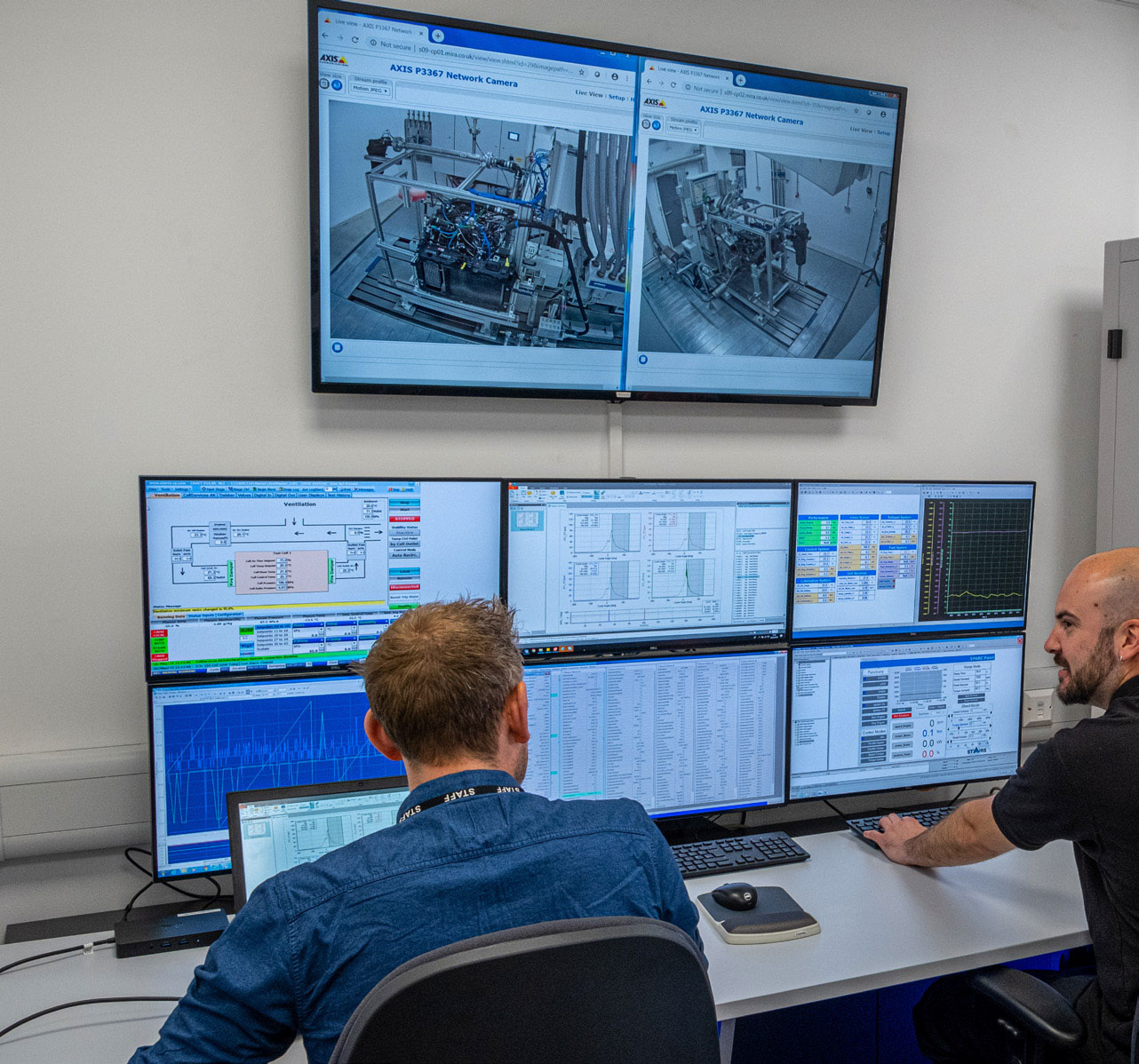Approach
HORIBA MIRA began with a series of on-road tests to establish a baseline dataset before the powertrain, battery and all ancillaries were removed from the vehicle and installed in an engine test cell at HORIBA MIRA.
In the test cell, the accelerator pedal position was controlled by the HORIBA test automation system with the vehicle road speed controlled by a HORIBA dynamometer. The brake pedal from the vehicle was actuated using the HORIBA ADS EVO robot driver.
The test cell’s environmental emulation system allowed the tests to be undertaken across a very broad range of ambient conditions, including altitudes up to 5,000 metres and temperatures ranging from -30oC to +50oC.
Data from this testing was used to build highly accurate, transient empirical models for attributes such as fuel consumption, engine out emissions and tailpipe emissions.
These transient empirical models form the foundations of the powertrain digital twin and were co-simulated with real-world driving scenarios generated using IPG CarMaker to predict performance and emissions attributes for these virtual scenarios.
By adopting a digital twinning approach, performance and emissions attributes for hundreds of real-world driving scenarios were predicted faster than real-time.
Successes and benefits
The successful development of a fully-correlated digital twin has given the OEM a hugely powerful tool for emissions analysis. Key benefits from the project included:
- Time taken to screen a vehicle across the entire range of RDE boundary conditions reduced by up to 70 per cent.
- Development of comprehensive transient empirical models that could be repurposed for other vehicles using the same powertrain – potentially generating even greater time savings across an entire product family.
- Model deployed to the OEM, along with comprehensive training on how to use it, establishing self-sufficiency.
Using traditional methods, it takes around four hours to prepare a vehicle and put it through a full RDE test. With the digital twin, each real-world driving cycle can be simulated and the performance and emissions predicted in a matter of minutes, dramatically increasing test efficiency.
Phil Roberts, Technical Specialist, HORIBA MIRA

